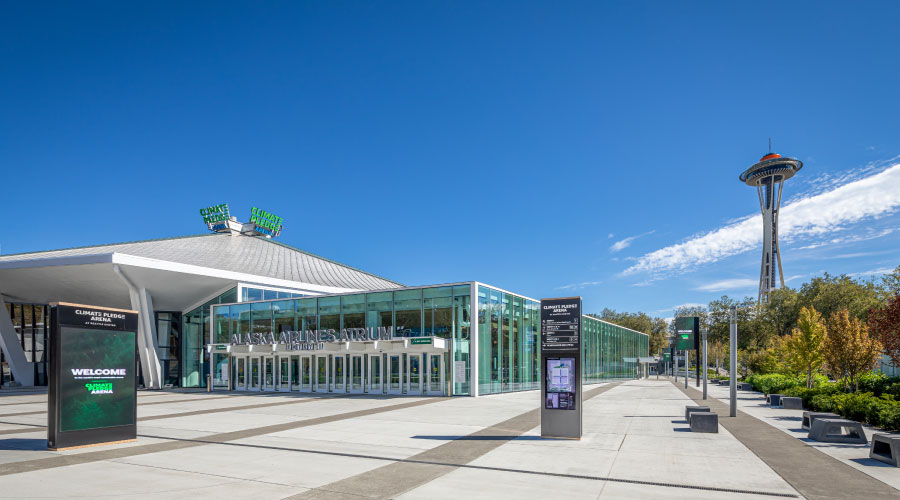Design Can Help Cut Cleaning Costs
Restroom cleaning costs are another area that is frequently overlooked when considering restroom designs. Frequently even minor changes in the design of the restroom and the selection of its finishes and components can have a major impact in cleaning costs. For example, countertops and fixtures with light finishes are better at hiding water stains than ones with dark finishes, resulting in the need to clean less frequently. Similarly, medium- to dark-toned ceramic floor tile and grout are better at hiding soils and stains than light toned tile. Even relatively minor changes such as these can affect how frequently the restroom must be cleaned.
Another design option that can affect how long it takes to clean a restroom is how the fixtures and partitions are installed. The most common design practice is to install fixtures and partitions that are mounted to the floor. By selecting fixtures that can be mounted to the wall and partitions that are attached to the ceiling and the walls rather than the floor, the time required to clean the restroom can be reduced. And over the life of a typical restroom, cleaning costs far exceed fixture and partition first costs. Again, facility managers should evaluate the potential savings based on the level of use and cleaning schedule for that particular application.
Additional Benefits of Life Cycle Costing
There are some additional benefits that can be realized by selecting components and finishes based on a life cycle cost analysis. For example, touchless controls are widely promoted for their water-saving capabilities. But touchless controls can also reduce maintenance requirements. Manual flush valves and faucet handles tend to be abused by users using their foot or elbow to activate them, resulting in wear and damage to the controls. And by making the controls touchless in their operation, less frequent cleaning is required.
Painted metal partitions offer the lowest first cost option, but, depending on the application and level of use, will require more maintenance than more expensive partition options to repair scratches and damaged paint.
Facility managers, if matters were left entirely up to them, would almost always select products that minimize long-term operating costs. The problem they face is that those who control the budget are often looking to minimize first costs. The job for the facility manager then becomes providing sufficient information to justify the additional first costs by demonstrating the long-term benefits. A carefully performed life cycle cost analysis will give facility managers the backup data they need.
James Piper, PhD, PE, is a writer and consultant who has more than 35 years of experience in facilities management. He is a contributing editor for Building Operating Management.
Related Topics:













